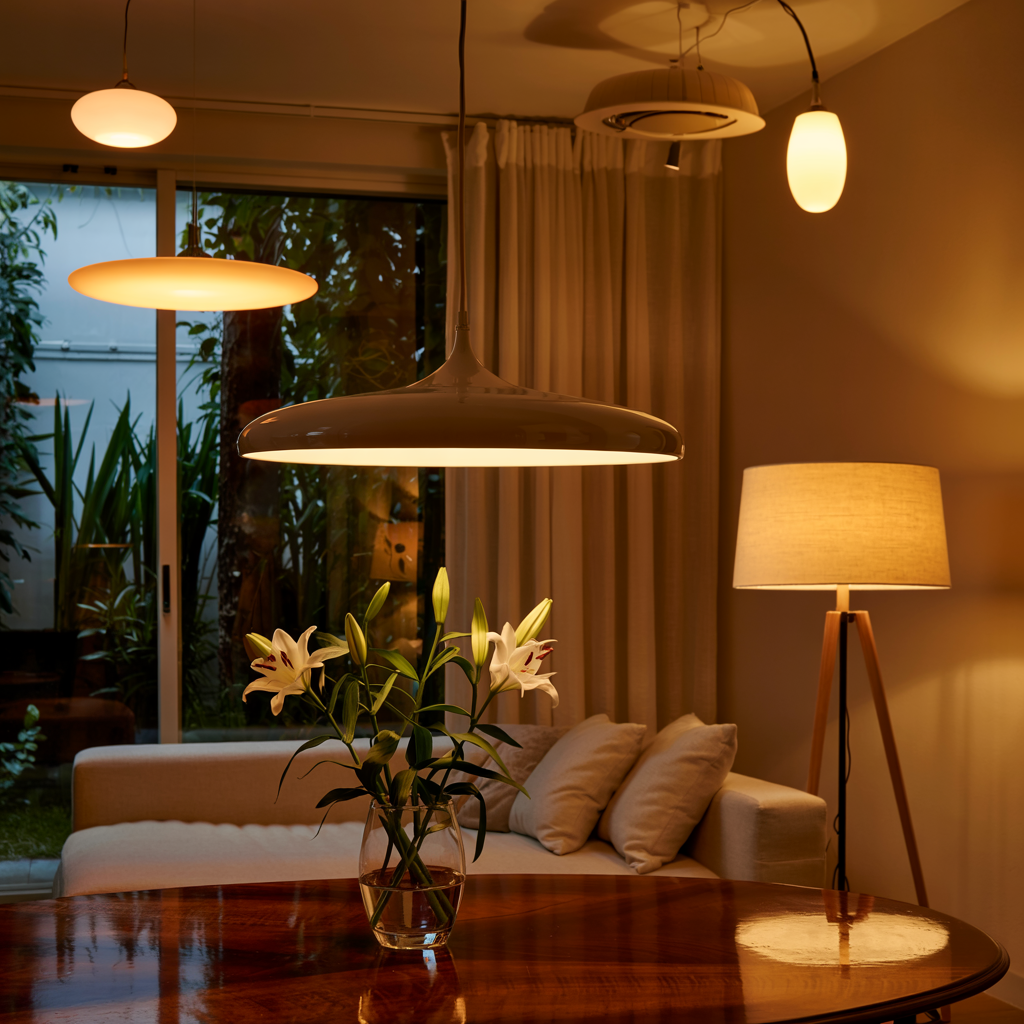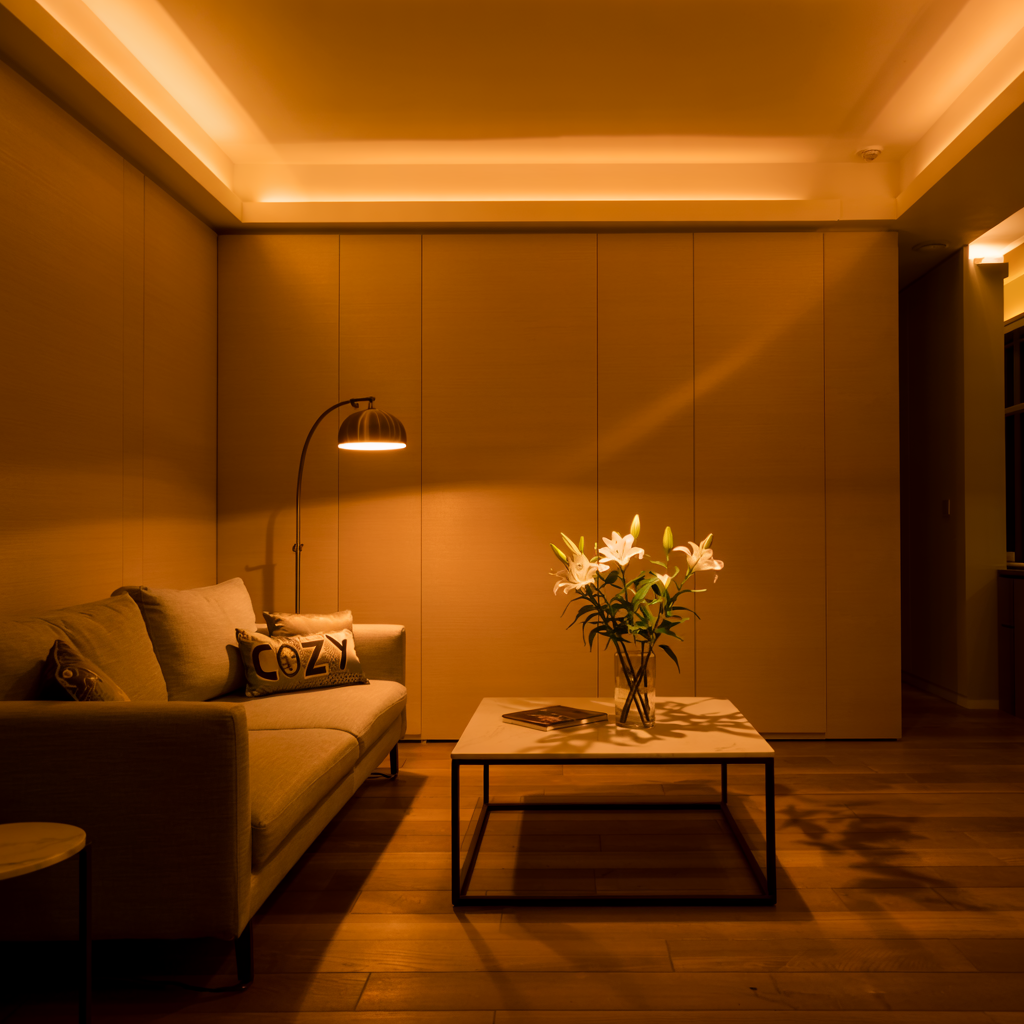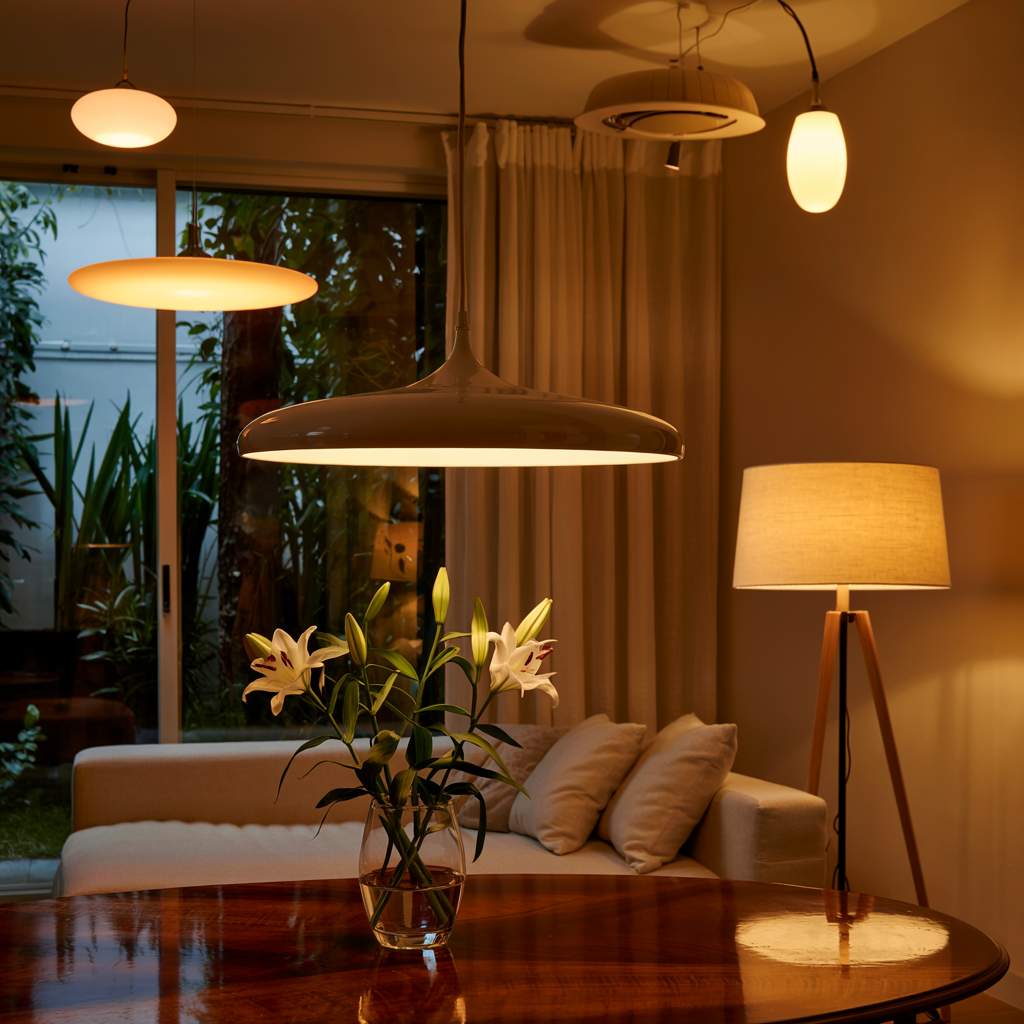Do Lights Make A Room Hotter? A Complete Guide For You
Do lights make a room hotter? This seemingly simple question opens the door to a fascinating exploration of physics, energy efficiency, and the impact of different lighting technologies on indoor temperatures. In this comprehensive guide, we’ll delve into the science behind how various light sources generate heat, explore the factors that influence the amount of…
Do lights make a room hotter? This seemingly simple question opens the door to a fascinating exploration of physics, energy efficiency, and the impact of different lighting technologies on indoor temperatures. In this comprehensive guide, we’ll delve into the science behind how various light sources generate heat, explore the factors that influence the amount of heat produced, and help you understand how to choose lighting solutions that minimize their impact on your home’s temperature. You’ll learn about incandescent bulbs, LEDs, CFLs, and more, gaining a deeper understanding of their energy efficiency and heat output. We’ll also address practical considerations, such as how the size of the room, insulation, and external factors can affect the perceived increase in temperature from lighting.
Incandescent light bulbs, the traditional type, produce light by heating a filament
until it glows. A significant portion of the energy they consume is converted into heat, not light. This makes them highly inefficient in terms of light output compared to their heat output. Think of it like this: only a small fraction of the energy used is converted into the light you see; the rest is lost as heat, making the room warmer.
Do Lights Make A Room Hotter?
Yes, lights can make a room hotter. Traditional incandescent and halogen bulbs release a lot of heat while producing light. LEDs produce much less heat, but still add some warmth. The impact depends on the number, type, and wattage of the lights used in the room.
Read More: 15 Home Office Ceiling Lighting Ideas That Spark Focus and Style
Fluorescent Lighting and Heat

Compact fluorescent lamps (CFLs) and other fluorescent lights are significantly more energy-efficient than incandescents. They produce light by exciting mercury vapor, which then emits ultraviolet (UV) light. This UV light is then converted into visible light by a phosphor coating on the inside of the bulb. While CFLs generate less heat than incandescents, they still produce some heat as a byproduct of their operation.
LEDs: The Energy-Efficient Choice
Light-emitting diodes (LEDs) represent the most energy-efficient lighting technology currently available. LEDs produce light through electroluminescence, a process where electrons jump across a semiconductor junction, emitting photons (light). Compared to incandescent and fluorescent bulbs, LEDs generate considerably less heat for the same amount of light output. This is a significant advantage in terms of energy savings and minimizing the impact on room temperature.
Factors Affecting the Perceived Increase in Room Temperature from Lighting

Room Size and Insulation
The size of the room plays a crucial role. In a small, well-insulated room, even a modest amount of heat from lighting can be noticeable. In a large, poorly insulated space, the impact of lighting on temperature will be less perceptible.
Number and Wattage of Lights
The number of light fixtures and their wattage directly influence the amount of heat generated. More lights and higher wattage bulbs will produce more heat.
Ambient Temperature
The ambient temperature of the room significantly impacts the perceived increase in temperature from lighting. On a cold day, the heat generated by lights might be more noticeable than on a hot day.
External Factors
External factors such as sunlight, drafts, and the overall climate control system in the room can all influence the perceived warming effect of lighting.
Read More: How to Determine Size of Light Fixture for a Room: A Comprehensive Guide
Comparing Heat Output of Different Lighting Types

Incandescent vs. Fluorescent vs. LED
-
- Incandescent: High heat output, low energy efficiency.
- Fluorescent: Moderate heat output, higher energy efficiency than incandescent.
- LED: Low heat output, highest energy efficiency.
Heat Output and Energy Consumption
The relationship between heat output and energy consumption is directly proportional for incandescent bulbs. For other types, like LEDs, the efficiency is much higher, meaning less energy is converted to heat for the same amount of light.
Measuring Heat Output
The heat output of a light bulb is typically measured in watts, which represents the rate of energy consumption. However, it’s important to note that not all watts are converted into heat. The efficiency of the bulb determines how much energy is converted into light versus heat.
Practical Implications and Energy Efficiency
Minimizing Heat from Lighting
To minimize the heat generated by lighting, choose energy-efficient LED bulbs. Consider using dimmer switches to reduce the brightness and, consequently, the heat output of your lights.
Energy Savings and Environmental Impact
Switching to energy-efficient lighting can lead to significant energy savings and a reduced carbon footprint. The less heat generated, the less energy is wasted, reducing your electricity bill and helping the environment.
Choosing the Right Bulbs for Your Needs
The best type of light bulb for your needs depends on several factors, including the desired brightness, color temperature, and budget. However, for minimizing heat generation, LEDs are the clear winner.
Beyond the Basics: Advanced Considerations
Thermal Management in Lighting Systems
Larger lighting systems, like those found in commercial spaces, often incorporate sophisticated thermal management techniques to prevent overheating. These systems include heat sinks and ventilation to dissipate the heat generated by the lights.
Heat and Light Distribution in a Room
The way a room is designed and the placement of lighting fixtures can significantly impact how heat and light are distributed throughout the space.
Impact of Lighting on HVAC Systems
In the context of a larger space, the heat generated by lighting can impact the efficiency of heating, ventilation, and air conditioning (HVAC) systems, adding extra strain and potentially increasing energy costs.
Frequently Asked Questions
What types of lights produce the most heat?
Incandescent bulbs generate the most heat because a large portion of their energy consumption is converted into thermal energy rather than light.
Do LED lights produce any heat at all?
Yes, even LEDs produce some heat, but significantly less than incandescent or fluorescent bulbs. This small amount of heat is usually negligible in terms of affecting room temperature.
How much does lighting contribute to overall room temperature?
The contribution of lighting to overall room temperature depends on several factors, including the type of lighting, the number of lights, the size of the room, and the insulation. In most cases, it’s a relatively small contribution.
Can I use dimmer switches with LEDs to reduce heat?
Yes, you can use dimmer switches with LEDs designed for dimming, reducing both the brightness and the heat output.
Are there any health concerns related to excessive heat from lights?
Excessive heat from lighting can contribute to discomfort and potentially increase energy costs. However, there are no direct health concerns related to the small amount of heat produced by typical household lighting.
Final Thoughts
So, do lights make a room hotter? The answer is a qualified yes, but the degree to which they do so depends heavily on the type of lighting used. While incandescent bulbs are notorious heat generators, LEDs offer a highly efficient alternative, producing significantly less heat. Understanding the nuances of different lighting technologies and their impact on energy consumption and room temperature empowers you to make informed choices for your home. By choosing energy-efficient lighting options like LEDs and implementing strategies like using dimmer switches, you can minimize the heat generated by your lights, save money on your energy bill, and contribute to a more sustainable lifestyle. Making smart lighting choices is a simple step toward a more comfortable and environmentally friendly home. Remember, choosing energy-efficient lighting is a win-win, reducing your carbon footprint and lowering your energy bills.

